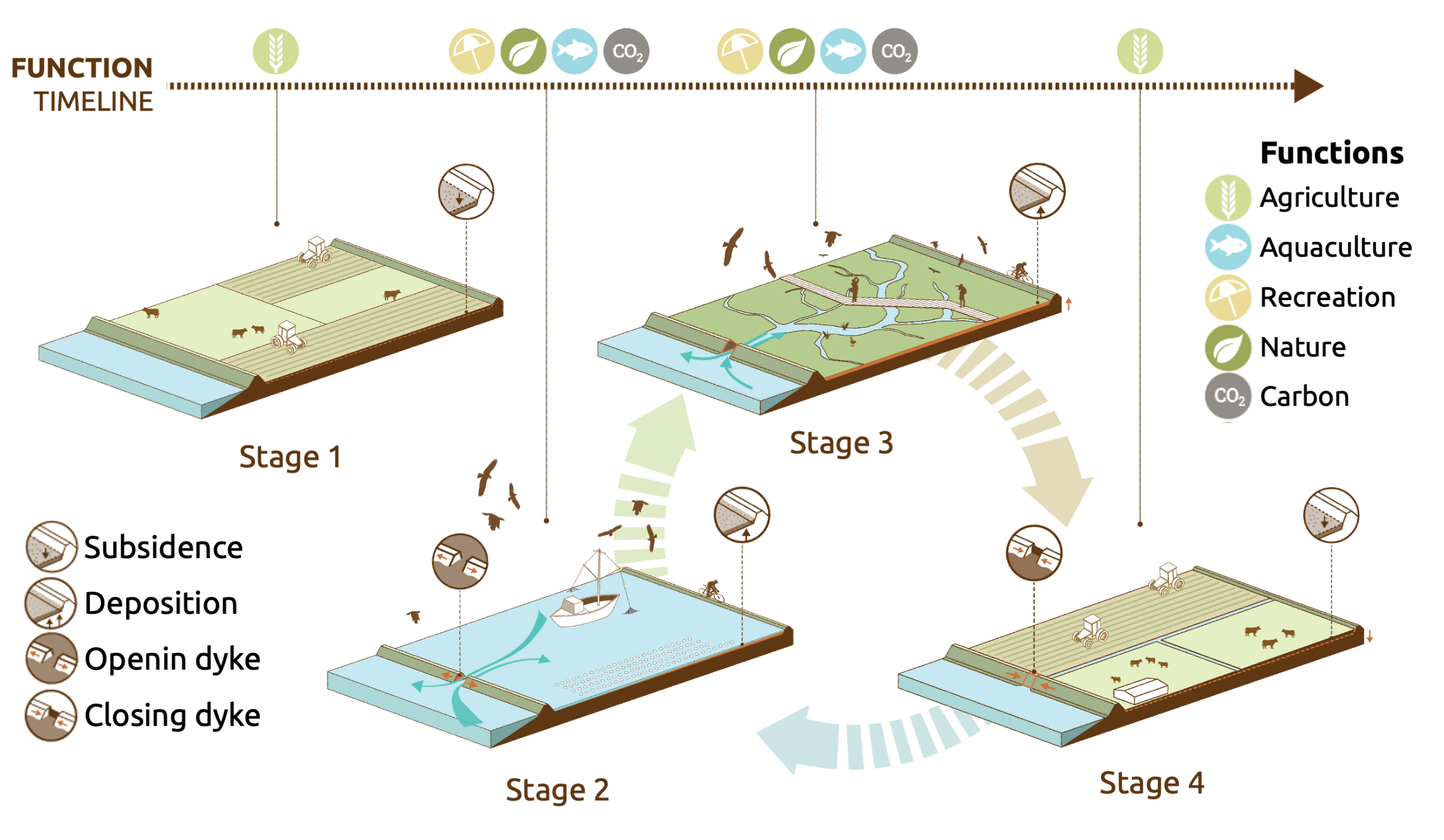J. van Belzen1*, G.U. Rienstra2, T.J. Bouma3
1 NIOZ,
2 Rienstra Beleidsonderzoek en Beleidsadvies BV,
3 NIOZ & Utrecht University,
Introduction
Climate warming and sea level rise force us to rethink our water safety approach. The strategy we applied over the last centuries of building ever higher and wider dykes has it limits and does not resolve problems arising in the long run related to subsidence and salinization. We explored implementing double dykes with transitional polder in the Dutch southwestern delta as an Ecosystem-based alternative and link land-level rise modelling to costs/benefits-analyses and economic effects.
Method and results
By switching to double dykes for coastal defence, the water safety functions normally provided by a single dyke are redistributed between two dykes. First, an existing polder dyke landward from the seaward dyke is upgraded to serve as primary defence. Next, a tidal inlet is made in the seaward wave-breaking dyke so that the polder can be flooded by tides and can silt up. As the stability of the primary defence dyke improve over time due to the land-level rise in the transitional polder, the dykes do not need to be raised and strengthened as much in response to sea level rise as conventional dykes, saving construction and maintenance costs. The transitional polder can furthermore generate revenue when it is used for aquaculture, cultivation of saline crops or for recreation/tourism (nature development). Finally, when the ground is at the target level, the inlet can be closed, and the transitional polder put back into agricultural use.
Double dykes turn out to be much cheaper than conventional dykes and are competitive with overtopping-resistant dykes. However, transitional polders provide a myriad of functions and services which give them additional benefits and economic effects making them currently the most interesting option. Timely implementation is however greatly beneficial for its success, because sea-level rise and subsidence will downplay delivery of functions and benefits.

Figure: Concept of double dykes and functions of the transitional polder over time. Illustration by Defacto.
I. Surname1*, F.N. Another-Surname2 , Y. Next-Surname2
1 University Name, Country; 2 Organization Name, Country
* Corresponding author: mail.name@organization.org


